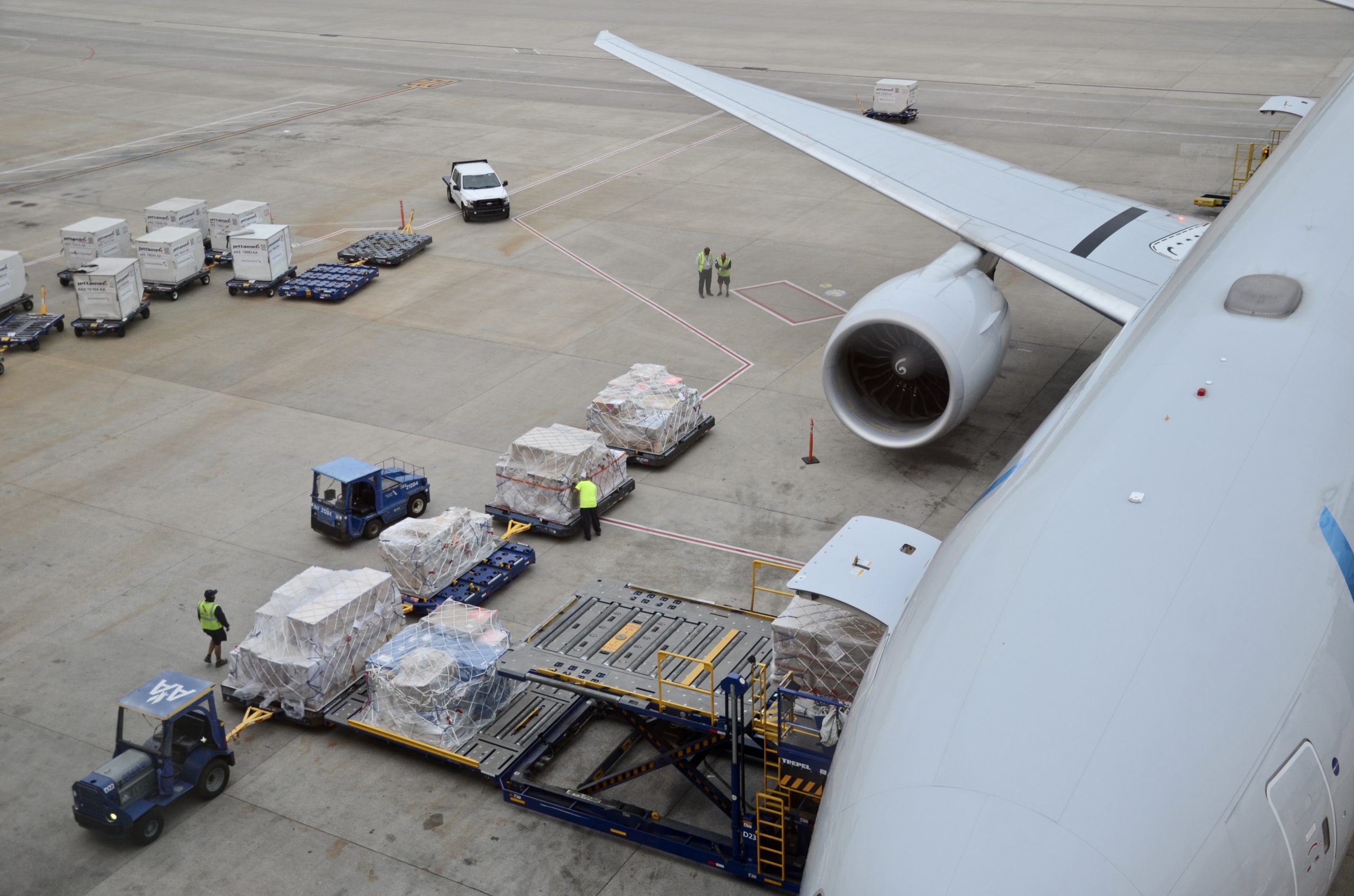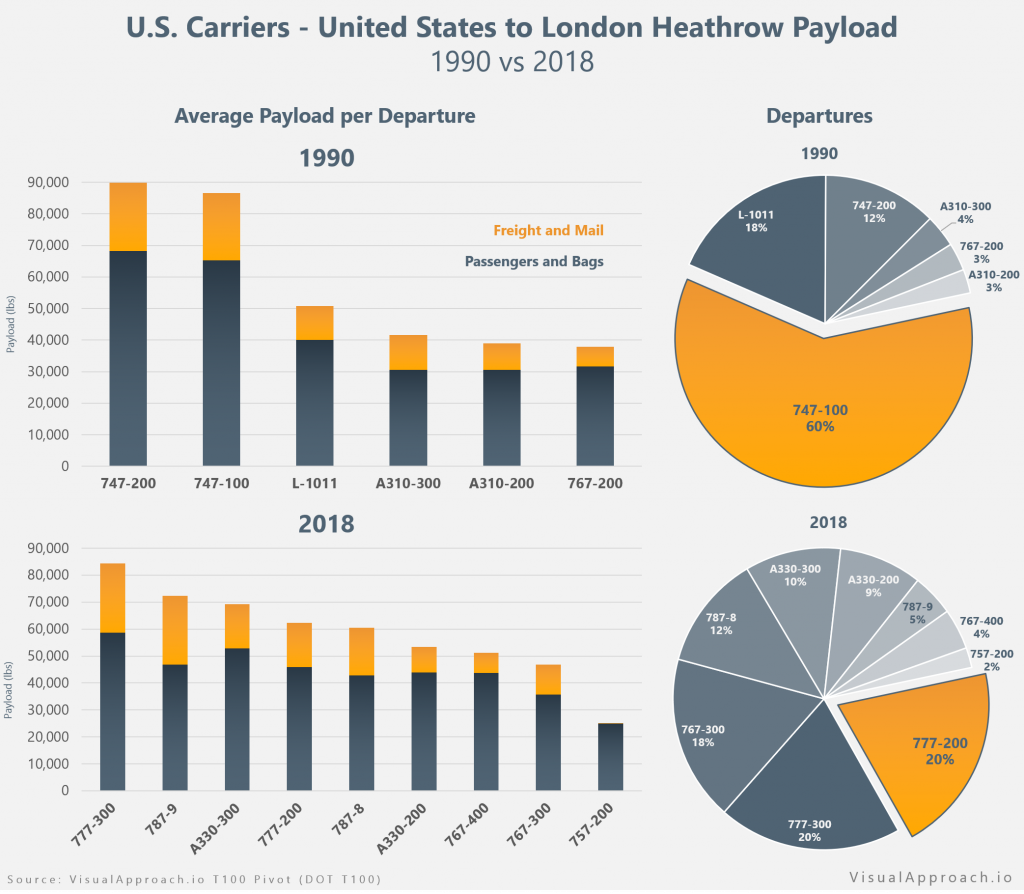This analysis from Visualapproach.io was added to The Air Current archive on March 15, 2020.
With the prospect of narrow-bodies entering the trans-Atlantic markets, the question of cargo arises. How much cargo is being moved in passenger aircraft? For that matter, how much weight is being carried in the form of passengers and bags, and how much is sold as freight or mail?
This week, we try to provide some insights to the question of how important freight is on passenger flights, at least from a weight standpoint. Using the Traffic Pivot tool, we can separate how payloads are allocated, with an assumed 235 lbs per passenger (including bags). Fortunately, the tool also goes back to 1990, allowing us a fascinating view of how payload moved across the Atlantic in a U.S. to Heathrow example.
Subscribe to TACFreight moves, and it moves only on wide-bodies. That is clear from the lack of freight and mail on the 757 compared to the wide-body alternatives. The question then becomes, how much do wide-body markets rely on cargo to complement passenger revenues and bring profitability? Further to the A321XLR article a few weeks ago, could narrow-bodies successfully pull enough point-to-point or higher frequency traffic away from the wide-bodies even without heavy cargo revenues?
Unfortunately, the answers lie in data we do not have: cargo yields. Still, with new entrants not flying wide-bodies, (and therefore no cargo revenue to lose when challenging a wide-body across the Atlantic), how will the legacy wide-bodies respond.
Perhaps the question is better posed, will cargo be enough to subsidize wide-body flying in order to keep passengers routed through large hubs, on large aircraft, and sharing payload with revenue cargo? Or, will the coming narrow-bodies pull enough passengers away from the large hubs, leaving wide-body seats empty… and cargo holds full?
Write to Courtney Miller at courtney@theaircurrent.com
Subscribe to Continue Reading
Our award-winning aerospace reporting combines the highest standards of journalism with the level of technical detail and rigor expected by a sophisticated industry audience.
- Exclusive reporting and analysis on the strategy and technology of flying
- Full access to our archive of industry intelligence
- We respect your time; everything we publish earns your attention


